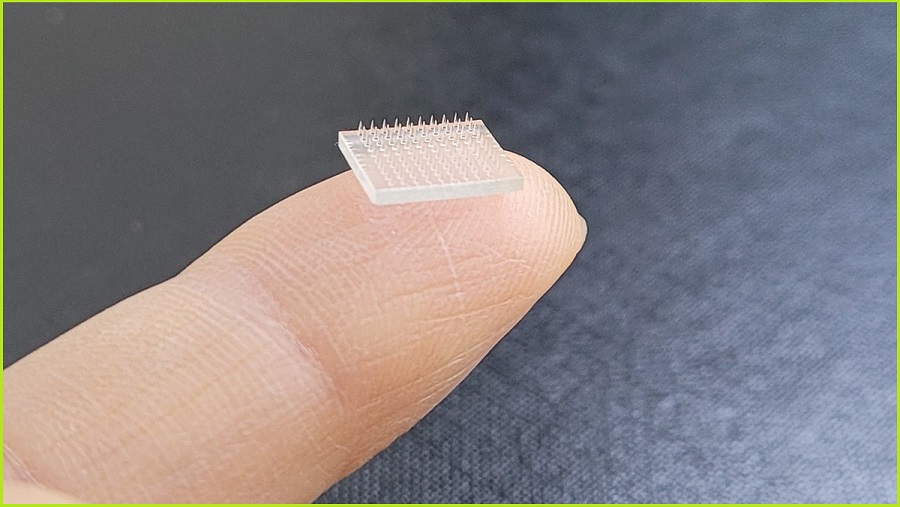A 3D-printed vaccine patch that provides greater protection than a typical vaccine shot has been developed by scientists at Stanford University and the University of North Carolina (UNC).
The patch consists of micro-needles that are set in a line on the tiny, square-shaped strip.
The design of the patch is considered a significant breakthrough because the tiny printed prongs are just the right length to make contact with the skin to administer the vaccine.
The skin is the target site because it is full of immune cells which the vaccines identify as the vehicles to create the immune system response.
The researchers found that the resulting immune response from the vaccine patch was actually significantly higher – found to be 10 times greater – than when a vaccine is administered in the conventional way with a needle into the arm muscle, on a study conducted in animals.
“In developing this technology, we hope to set the foundation for even more rapid global development of vaccines, at lower doses, in a pain- and anxiety-free manner,” said lead study author and entrepreneur in 3D print technology Joseph M. DeSimone, professor of translational medicine and chemical engineering at Stanford University and professor emeritus at University of North Carolina-Chapel Hill.
3D printed vaccine patch breakthrough
While micro-needle patches have been studied for decades, in this the development the researchers have been able to overcome some past challenges.
In particular, by utilising 3D printing, it has allowed the micro-needles to be easily customised to develop a vaccine patch for COVID-19 vaccines, with the potential to expand to flu, measles and even hepatitis.
The study showed the vaccine patch had generated a significant T-cell and antigen-specific antibody response that was 50 times greater than an injection delivered under the skin.
“Our approach allows us to directly 3D print the microneedles, which gives us lots of design latitude for making the best microneedles from a performance and cost point-of-view,” said lead study author Shaomin Tian, a researcher in the department of microbiology and immunology in the UNC.
The heightened immune response could even lead to dose sparing, which uses vaccines more efficiently so they will go across more people, with a micro-needle vaccine patch using a smaller dose to generate a similar immune response as a vaccine delivered with a needle and syringe.
In addition, using these types of printed patches enables a greater variety in the doses of vaccines that can be administered in this way.
The researchers believe that the ease and effectiveness of a vaccine patch sets the course for a new way to deliver vaccines that are painless, less invasive than a shot with a needle and can be self-administered.
In this case, vaccine patches with the COVID-19 vaccine-coated micro-needles which dissolve into the skin could be shipped anywhere in the world without special handling and people can apply the patch at their convenience.
Innovation leads pandemic response
Most micro-needle vaccines are fabricated using master templates to make moulds; however, developing the micro-needles moulds is not very versatile and there are drawbacks such as the loss of needle sharpness during replication.
In this experiment, the micro-needle patches were printed at Carolina using a CLIP prototype 3D printer that DeSimone invented and is produced by Carbon, a Silicon Valley company he co-founded.
This is one of numerous innovations that show promising tech-driven solutions to help with the COVID-19 pandemic, with printed virus tests being created using a 3D printer and even an AI-powered test that delivers rapid results.
“One of the biggest lessons we’ve learned during the pandemic is that innovation in science and technology can make or break a global response,” DeSimone said.










